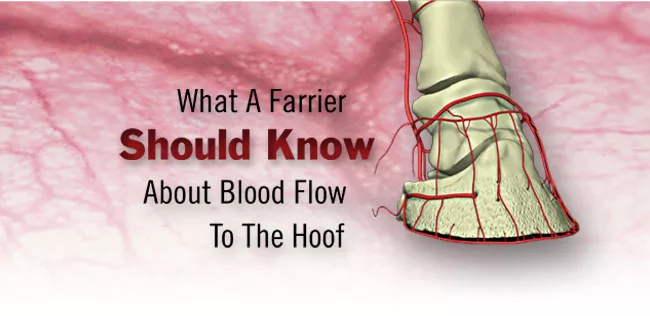American Farriers Journal
American Farriers Journal is the “hands-on” magazine for professional farriers, equine veterinarians and horse care product and service buyers.

Blood flows through the equine hoof, reaching almost to the surface as it delivers oxygen and other nutrients needed to keep the foot healthy. Although the blood-delivery system inside the foot is largely the concern of veterinarians, farriers can affect blood flow for better or worse with their shaping and shoeing.
So, what should every farrier know about blood flow in the hoof?
“The most important thing that a farrier ought to be aware of is the circulation as it curves around the edge of the coffin bone through the circumflex artery of the foot. That’s the area that farriers can impact,” says equine veterinarian Glenn “Andy” Anderson, of Broken Arrow, Okla.
Anderson, a member of the International Equine Veterinarian Hall of Fame, says, “The farrier really doesn’t really affect the blood flow through the digital vessels coming down the limb, but trimming and shoeing can certainly impact the circumflex artery.
“If you trim the wall too short, or if you get the sole pressure between the sole and the shoe, you can actually compress the vasculature and reduce the blood flow to that area,” he adds.
“And if you reduce the blood flow to an area enough, you get ischemic necrosis, in which the tissue actually dies from lack of blood supply.”
To avoid potential confusion, definitions of some circulatory system components are in order. In simplest terms, arteries carry blood from the heart to the hoof, capillaries distribute nutrients from the blood to surrounding tissues while…